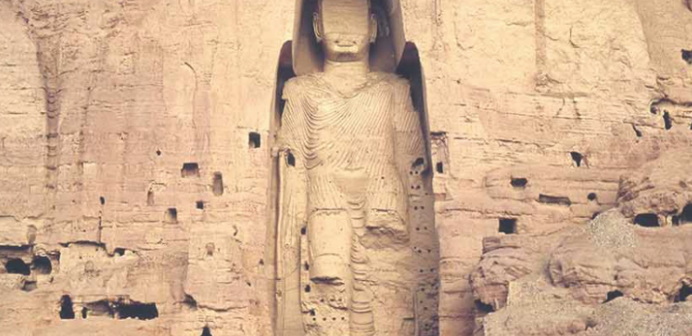Desk report: From 1996 to 2001, Afghanistan was ruled by the Taliban. In 2001, the US-led Western coalition launched a joint operation to end the Taliban regime, accusing it of harboring al-Qaeda leaders. At that time, the Taliban were trying to destroy archeological sites and monuments scattered in different parts of Afghanistan. After that they regained power for about 20 years. The Taliban have also begun formalities to form a government. The world was stunned by the destruction of Bamiyan during the first Taliban regime. Historians and archaeologists around the world believe that they could have a destructive attitude in the second phase as well. Afghanistan has been a land of different cultures since time immemorial. There are references to this region in various myths. Purana experts believe that the Brahmanda Purana refers to the inhabitants of this region as Gandharvas. From that point of view, Gandhari, one of the main characters of the Mahabharata, was also the daughter of a king of Afghanistan. From ‘Markandeya Purana’ to ‘Mahabharata’ — Gandhara (Gandharva’s abode) region is mentioned as an example of superior civilization. Most historians identify Gandhara as today’s Afghanistan.If we go back to the specific Saltamami era of history from the mythological period, we can see that the history of this land has gone through one empire and culture after another. These include the Empire of the Persian Emperor Cyrus, the Greek Empire of Alexander the Great, the Indian Mauryan Empire, the Kushan Era, and of course the Islamic Empire of various periods. That is why the Bactrian-Greek, Kushan, Hun, Ghori, Mughal and Durrani cultures have influenced this land. Signs of all these cultural influences are scattered throughout Afghanistan. The state archives of the country have carefully preserved artifacts ranging from Gandhara art to Islamic archeology of the recent past. Apart from this, there are innumerable archeological sites spread all over the country. In 1969, the Soviet Union invaded Afghanistan. And by 1992, several archeological sites were being raided by Soviet forces or locals in search of “hidden treasures.” As a result, a number of ancient civilizations began to be damaged. This trend continues under Taliban rule. Hadda, near the city of Jalalabad in eastern Afghanistan, has a number of archeological sites dating back to the Mahayana Buddhist period. Under the patronage of the Kushan emperor Kanishka, Mahayanaism spread beyond the borders of India to a wide area of the world. The Taliban attacked Buddhist stupas and monasteries in Haddar Tapa Shoto. The Taliban also attacked other sites in Hadda. Adjacent to the Khyber Pass, the region is rich in Gandhara art. Many of the statues, built between the first and fourth centuries AD, fell victim to the Taliban’s wrath. Alexander the Great is said to have founded a city in the northern Afghan province of Takhar. The city later became the center of Bactrian Greek or Indo-Greek civilization. The Uzbeks later named the city I-Khanoum. Huge artefacts are found here. A lot of things started coming out of I-Khanoum in the hands of the Taliban in the Pakistani market. Private collectors continue to buy it at huge prices. The I-Khanoom archives provide a good amount of money to the Taliban. Several artifacts were recovered after the end of the Taliban’s first term. The Mir Zakah region on the Afghan-Pak border is rich in Bactrian-Greek coins. Between 1992 and 1995, about five and a half lakh silver and bronze coins were found in a well. A large part of that precious currency was smuggled into the international market by the Taliban. During the Soviet occupation and the first regime of the Taliban, a lot of valuables were reportedly looted from the National Museum in Kabul. In 1992, the Taliban looted the National Museum. About 80 percent of the collection is destroyed or lost in this case. Experts believe the smuggling of Afghan antiquities and looting has fueled the Taliban’s coffers. After the incident in Bamiyan, the matter was openly practiced. In October 2001, US forces overthrew the Taliban regime. Afghanistan again under Taliban rule. Mohammad Fahim Rahimi, director of the National Museum in Kabul, said the Taliban had set up armed guards outside the museum. And the Taliban fighters have been instructed not to do so in Bamiyan.
The Taliban have received a large amount of hidden treasure
0
Share.




